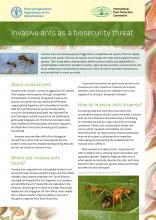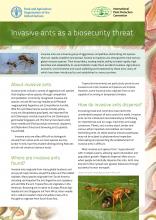Zero-tolerance biosecurity protects high-conservation-value island nature reserve.

BRB
Available Online
Scott,John K. McKirdy, Simon J. van der Merwe, Johann Green, Roy Burbidge, Andrew A. Pickles, Greg Hardie,Darryl C. Morris, Keith Kendrick, Peter G. Thomas, Melissa L. Horton, Kristin L. OConner, Simon Downs, Justin Stoklosa, Richard Lagdon, Russell Marks, Barbara Naim, Malcolm Mengersen, Kerrie
2017
Barrow Island, north-west coast of Australia, is one of the worlds significant conservation areas, harboring marsupials that have become extinct or threatened on mainland Australia as well as a rich diversity of plants and animals, some endemic. Access to construct a Liquefied Natural Gas (LNG) plant, Australias largest infrastructure development, on the island was conditional on no non-indigenous species (NIS) becoming established. We developed a comprehensive biosecurity system to protect the islands biodiversity. From 2009 to 2015 more than 0.5 million passengers and 12.2 million tonnes of freight were transported to the island under the biosecurity system, requiring 1.5 million hrs of inspections. No establishments of NIS were detected. We made four observations that will assist development of biosecurity systems. Firstly, the frequency of detections of organisms corresponded best to a mixture log-normal distribution including the high number of zero inspections and extreme values involving rare incursions. Secondly, comprehensive knowledge of the islands biota allowed estimation of false positive detections (62% native species). Thirdly, detections at the border did not predict incursions on the island. Fourthly, the workforce detected more than half post-border incursions (59%). Similar approaches can and should be implemented for all areas of significant conservation value.








